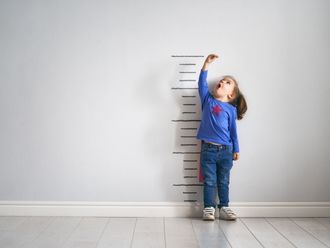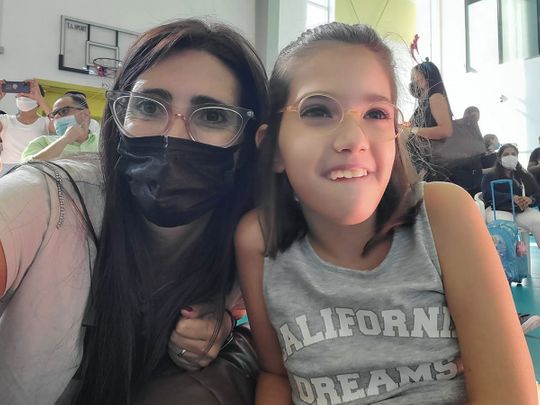
She just screamed. And screamed. And screamed. Unable to form words that she’d learned, 16-month-old Sofia yelled. It was an early morning, the house had been wrapped up in boxes for the big move to UAE from Italy and there were only three days to go.
After calming her child, who had just the previous night asked for ‘papa’ and ‘aqua’, Italian journalist Benedetta Pasero spoke to her in-laws, her friends – they all said it was regression in speech caused by the thought of leaving her house, her extended family behind.
For now, there was much to do, so they packed up their things and headed to the new country that would be home for the next 10 years.
Once there, Pasero – who took Sofia to the neighbourhood park – began to notice differences in the development of other children Sofia’s age and her own growth. “I used to take her to the park and I could see the difference because a kid who was exactly like her… and then after a week, he could climb and she couldn’t; they could point, she couldn’t; and she could walk but she couldn’t run like the others.
“Slowly, slowly she started to lose her balance. She just screamed badly – she wanted to tell me things but she just couldn’t, so she was in such distress,” the expat recalls.
She went from doctor to doctor to specialist to geneticist, who finally had an answer for why Sophia wouldn’t speak, why her legs would bend outwards, why she’d have jerky movements. “She went straight to this blood test, she said we are going to test this specific gene called MECP2,” she recalls. The blood test confirmed the geneticist’s suspicion; Sophia had Rett syndrome.
Having a term to explain your child's unusual behaviour may make a person feel validated, but for the Pasero family, it was devastating; for now, there is no cure. Clinical trials for gene-repairing, mRNA and Crispr – or gene editing – therapies are on, but for now, one must manage the disease.
“Mum is teacher for adults with autism, so her colleagues helped and trained me… I was trained by a neurologist on how to not let her lose her walking skills and she didn’t. I spent time in studying nutrition because she was very thin, she lost a lot of weight, they wanted to put her on a feeding tube and luckily, my husband and I we managed to avoid that by finding the right combination of food,” she explains.
“She was hyperventilating when she was four-and-a-half, then she started to have seizures when she was five-and-a-half-years old. At that time she also started to lose weight. When she was six-and-a-half, her seizures went worse, it was another kind of seizure that was diagnosed as drug resistant, a neurologist gave up because we tried all kinds of drugs and they didn’t work. Until, in Dubai another neurologist said, ‘Madam, all epilepsy episodes or seizures are drug resistant until you find the right drug.’ And he did.”
Around this same time, Sofia began to suffer from scoliosis - a sideways curvature of the spine, which can cause organs to be pushed leading to breathing troubles and pain.” Doctors started to talk about bracing but for scoliosis braces is proven not to work very well for Rett kids because it’s a neurological scoliosis. "And there was talk about surgery.”
Scoliosis: It used to move the internal organs – but now it doesn’t happen anymore because there is spinal fusion surgery that can help.
Malnutrition: These girls can’t eat a lot and sometimes they cannot chew and swallow properly. But now there’s a chance of a feeding tube, so it’s not a case anymore.
Not in books, but anecdotally says Benedetta Pasero, she’s heard of lungs failing, pneumonia being a big cause. “COVID-19 is a serious thing for us. It happens frequently and many girls are not strong enough to survive,” she says.
Some girls have problems with the heart, specifically a prolonged QT interval and T-wave abnormalities.
Fortunately Pasero found a therapist who managed to reverse the condition using Pilates.
By the time Sofia had turned seven-and-a-half, the doctors were worried about malnutrition; she had been eating very, very little; there was talk of a feeding tube. She was also having trouble drinking water. “When she was seven she wasn’t able to drink anymore, she was choking every time she drank because she couldn’t bend her head back like we do when we drink. So I managed to teach her how to drink from a straw and I managed to build her a special bottle so I can squeeze it and a thin silicon straw, which she could drink from,” says Pasero.
“She didn’t want to drink water so we were told to give her jellified water. But I tried all the drinks available in the supermarket and I found out that she liked one of them, so I put it in a special bottle with a straw and she drinks it,” she adds.
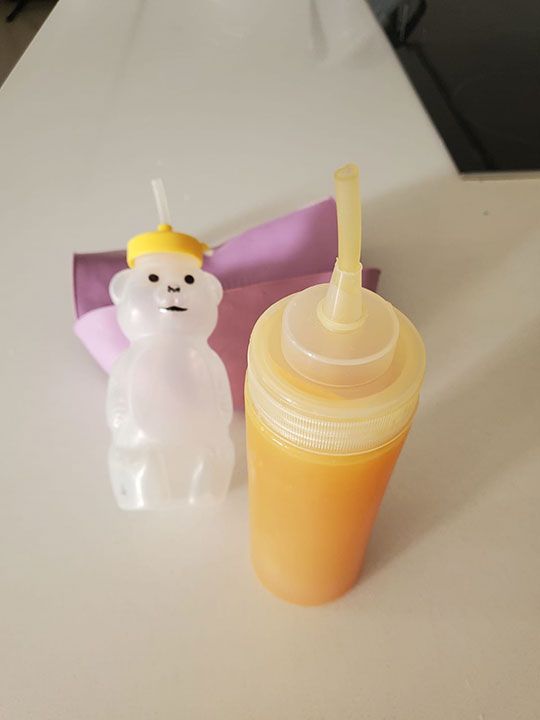
Today, Sofia is 11 – and her latest battle is with sleep. “She can’t stay asleep for more than 4-5 hours, and this is hard; medication doesn’t seem to work so far,” says her mum.
It’s something that’s been going on for a while – Pasero has had to call in reinforcements. “I got someone to do night shifts with me because the doctor told me, either you find a way to sleep or you will be the next neurologist patient. Now working. She sleeps at 9-9.30pm and is up at 1am,” she explains.
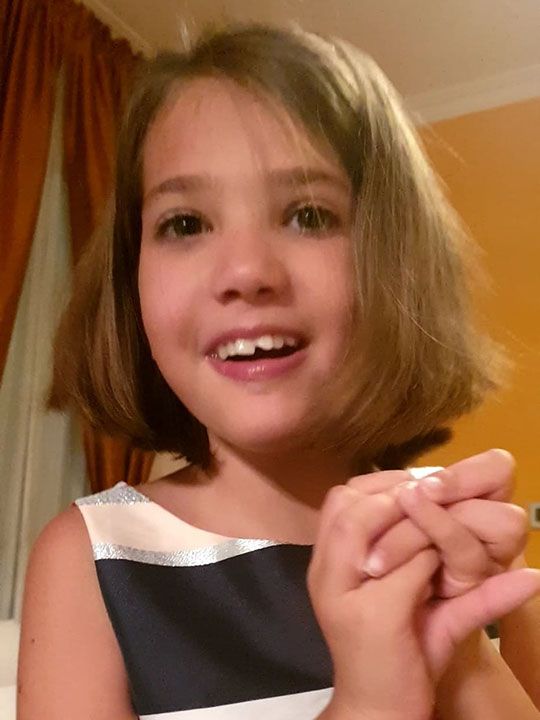
Sofia can’t use her hands; they move involuntarily. She can walk, but not with a smooth gait. “She communicates mostly though the eye gaze. The eyes are the only thing that the disease didn’t eat away. There are some eye gaze computers to help – I’m not the best at it. But we found out another way to communicate. I give her two options with my hands and she chooses with her head or her gaze – looking at my hands; of course I only have two and so it’s not a lot but at least I can understand if she wants to go to the pool or the park, for example.
“And she tries to modulate her voice, she can only scream, but she modulates enough that I can understand if she wants something or if she’s in pain,” says Pasero.
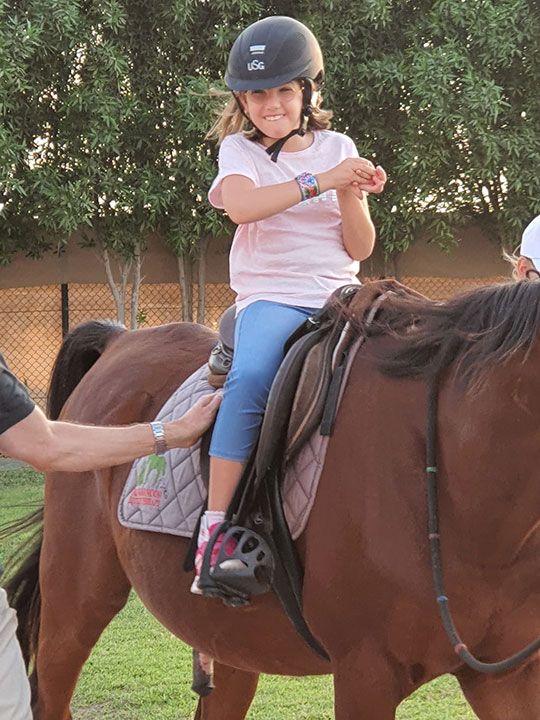
Sofia may be homebound but she does have a great friend in her younger brother, eight-year-old Michelangelo. Pasero explains, “We decided not to hide anything so we always explain to him what his sister’s condition was, of course in a way he understands. We always told him that Sofia’s body doesn’t listen to her and that exactly like he’s not able to move his ear, for example, or to move his second toe without moving all the others, because his body doesn’t listen, with Sophia it happens with her whole body so she cannot play with him. He found a way to understand, to help.
“He’s very mature for his age. Sometimes it looks like they have the same relationship as every brother and sister, he gets very annoyed because she wants to spy on his tablet and she pushes him for this.”
And the sibling rivalry would rear its head when the duo was younger, but for now that’s been pushed aside. “I tried so hard to balance between them – of course I have to spend so much time with her, but then I try to spend a day with him or do something alone with him as well. But he’s fine – he’s well balanced,” she says.
Rett syndrome is not autism
Pasero explains that her child Sofia, who has Rett syndrome was almost diagnosed with autism because the symptoms – jerky moments, withdrawal from social interactions, age at which changes were noticed – are all similar. But, she explains that the therapies and treatments of autism must not be forced in a child with Rett, because they cannot help it – all you will end up with is a frustrated, depressed child.
“Science could improve dramatically and change my Sofia’s life. If I have this hope and it keeps me alive, I’d like others to have the same hope, but without the proper diagnosis, they can’t have the same hope,” she says, saying that children must be tested so they can be given the care they deserve. So parents can know what’s happening and yelling can stop for communication to begin.
Have an issue you'd like us to discuss or a topic you'd like us to cover? Write to us at parenting@gulfnews.com



